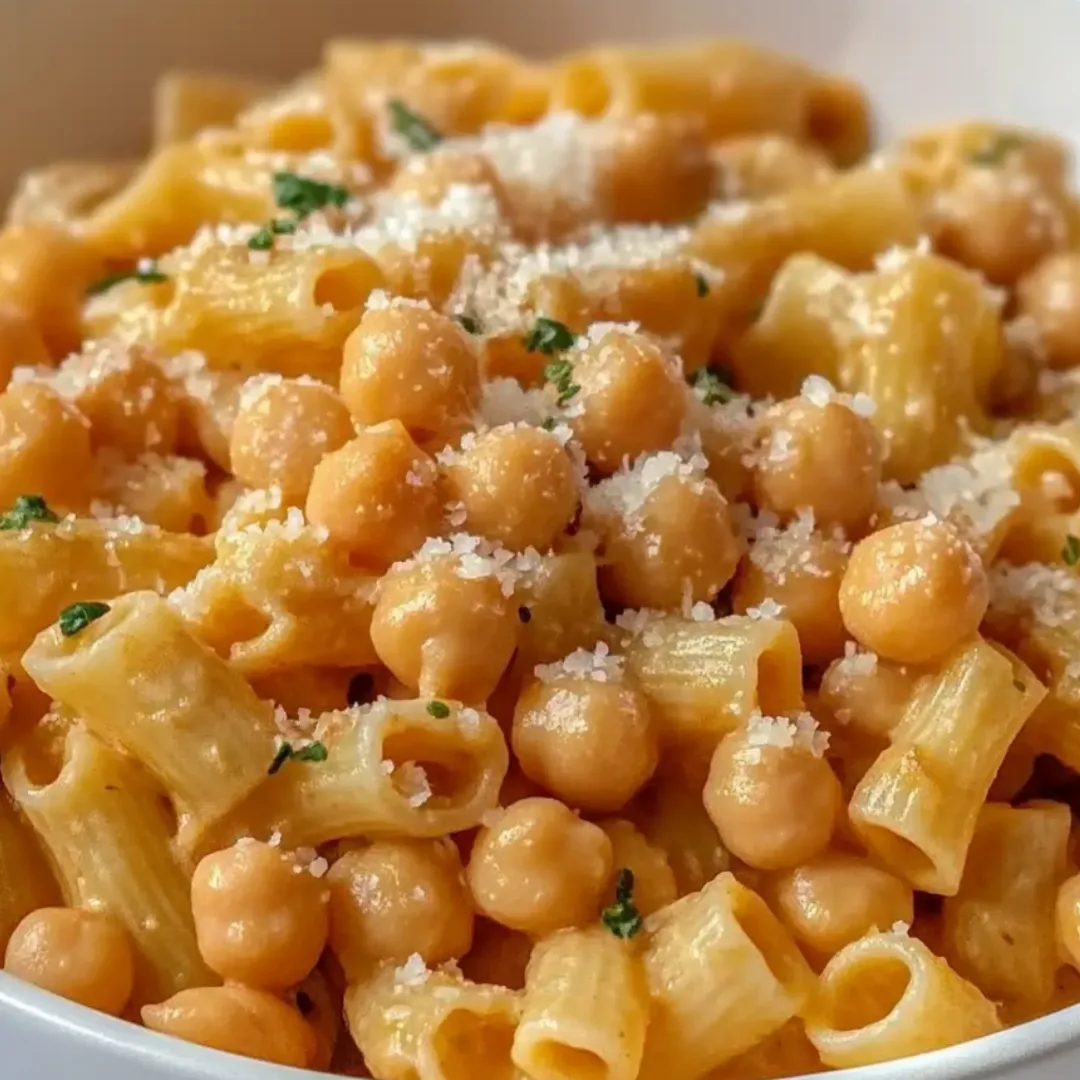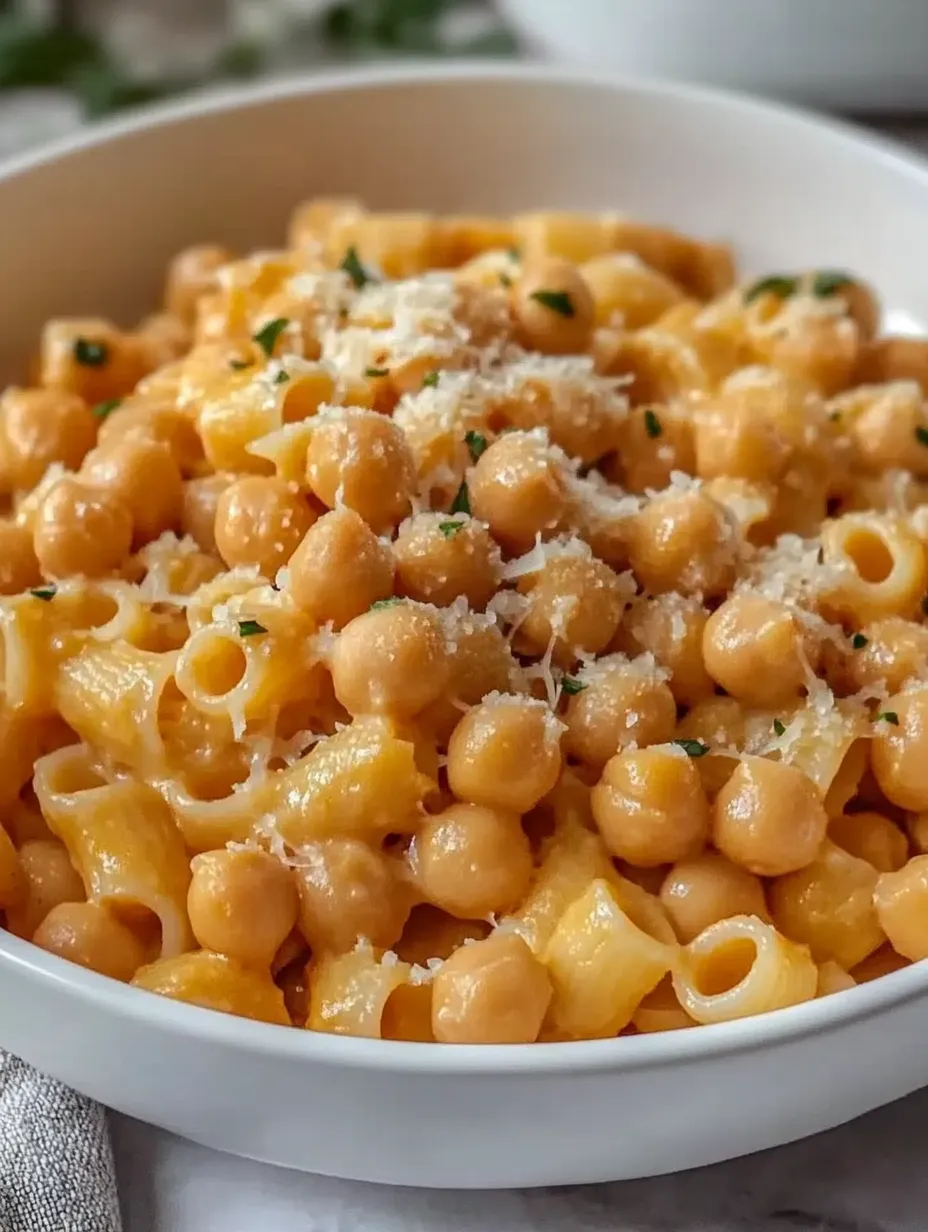 Pin it
Pin it
This pasta e ceci dish transforms humble pantry ingredients into a remarkably comforting Italian classic. Warm, hearty, and deeply satisfying, this rustic chickpea and pasta combination has been sustaining Italian families for generations while requiring minimal effort and ingredients.
I discovered this recipe during a particularly busy week when fresh groceries were scarce. The first spoonful transported me straight to a small Italian trattoria, and it has since become my most requested comfort meal when friends visit on chilly evenings.
Ingredients
- Chickpeas: providing plant-based protein and creamy texture when partially mashed
- Ditalini pasta: the traditional small tube shape perfect for catching sauce
- Olive oil: use extra virgin for best flavor
- White onion or shallots: creating a sweet aromatic base
- Garlic cloves: adding essential pungent depth
- Fresh rosemary: bringing piney aromatic notes that complement chickpeas beautifully
- Tomato paste: concentrated flavor that creates umami richness
- Chili flakes: providing gentle warmth rather than overwhelming heat
- White wine: deglazing the pan and adding acidity to balance creaminess
- Vegetable stock: forming the flavorful base of the sauce
- Pecorino cheese: adding salty richness and helping create a silky texture
Step-by-Step Instructions
- Create the Flavor Base:
- Heat olive oil in a skillet over medium heat until shimmering. Add diced onion and cook for 5–6 minutes until translucent and starting to turn golden at the edges. This slow cooking develops sweetness that forms the foundation of your dish.
- Build Aromatic Layers:
- Add sliced garlic and cook for another 1–2 minutes until fragrant but not browned. Immediately introduce the diced rosemary and chili flakes, stirring constantly for about 60 seconds. This brief toasting releases their essential oils and intensifies their flavors throughout the dish.
- Create Depth With Tomato:
- Add tomato paste and stir continuously for about 2 minutes until it darkens slightly and smells caramelized. This brief cooking transforms the raw tomato flavor into something deeper and more complex.
- Deglaze And Build Sauce:
- Pour in white wine and scrape any browned bits from the bottom of the pan. Allow it to reduce for 2–3 minutes until the sharp alcohol aroma dissipates. Add chickpeas and stock, bringing to a gentle simmer. Use the back of your spoon to crush about a quarter of the chickpeas against the side of the pan. This natural thickening technique creates a luxurious texture without adding flour or cream.
- Cook Pasta Directly In Sauce:
- Add uncooked pasta directly to the simmering liquid, stirring frequently to prevent sticking. Cook until pasta is tender but still has slight resistance when bitten. The starch released from the pasta further thickens the sauce and helps it cling to each piece.
- Finish With Cheese:
- Remove from heat and immediately stir in Pecorino cheese until completely melted and incorporated. The residual heat transforms the sauce into a silky, cohesive mixture that coats every bite.
 Pin it
Pin it
The humble chickpea truly makes this dish special. While traveling through central Italy, I stumbled upon a tiny restaurant where the owner explained that pasta e ceci was traditionally eaten on Fridays when meat was avoided. Her version used chickpeas her family had grown and dried themselves, creating a depth of flavor I try to honor each time I prepare this dish.
Historical Context
Pasta e ceci has deep roots in Italian cucina povera cooking traditions that transformed affordable ingredients into nourishing meals. Dating back centuries, this dish sustained farming families through winter months when fresh produce was scarce. The combination of legumes and pasta created complete protein, making it nutritionally valuable during lean times. Regional variations exist throughout Italy, from brothier Roman versions to thicker Tuscan interpretations, but all share the beautiful simplicity of transforming pantry ingredients into something greater than the sum of their parts.
Texture Perfection
The ideal pasta e ceci has a silky, slightly thick consistency that clings to each piece of pasta without becoming stodgy. The secret lies in crushing some chickpeas while leaving others whole for textural contrast. Cook the pasta slightly less than package directions since it will continue absorbing liquid as it sits. If your dish thickens too much upon standing, simply add a splash of hot water or stock before serving to reach the ideal velvety consistency that Italian grandmothers have perfected over generations.
Flavor Variations
This recipe provides an excellent foundation for personalization. For a deeper flavor profile, add anchovy fillets when sautéing the garlic they dissolve completely while adding remarkable umami depth. Replace white wine with red for a more robust character, especially during winter months. Incorporate kale or spinach in the final minutes of cooking for added nutrition and color. Experiment with herb variations like thyme or sage instead of rosemary. For a richer finish, drizzle high quality olive oil and add fresh black pepper just before serving to create aromatic layers that elevate this humble dish.
 Pin it
Pin it
Frequently Asked Questions
- → Can I use a different type of pasta?
Yes, you can substitute ditalini with other small pasta shapes like elbow macaroni or orzo, depending on your preference.
- → What can I use instead of white wine?
You can use white wine vinegar or even a splash of lemon juice as a substitute for white wine to maintain the acidity.
- → How do I store leftovers?
Store leftovers in an airtight container in the refrigerator for up to 5 days. Reheat with a splash of vegetable stock to keep the sauce creamy.
- → Can I add more vegetables to this dish?
Yes, feel free to add carrots, celery, or even fresh cherry tomatoes for added flavor and texture.
- → Is this dish suitable for vegans?
To make this dish vegan, simply omit the Pecorino cheese or use a plant-based cheese alternative.
